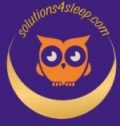Obstructive sleep apnea has grown to become what some doctors now describe as a lifestyle disease It began subtly. Anil Kumar, a 42-year-old chartered accountant from Kochi, found himself waking up at 2am most nights, unable to fall back asleep. At first, he thought it was due to work stress. He tried herbal teas, switched off his gadgets early, and even started using over-the-counter sleep aids. But what began as an occasional annoyance turned into a nightly battle. He would wake up groggy, mentally foggy, and his productivity would plummet Sleep disorders are typically classified into seven broad categories. These include insomnia, sleep-related breathing disorders like obstructive sleep apnea (OSA), central disorders of hypersomnolence such as narcolepsy, circadian rhythm disorders, parasomnias like night terrors and sleepwalking, sleep-related movement disorders such as restless legs syndrome, and sleep disturbances that occur as a consequence of neurological or psychiatric illnesses. Among these, insomnia and sleep apnea top the list in terms of frequency and impact. Obstructive sleep apnea, meanwhile, has grown to become what some doctors now describe as a lifestyle disease. “In OSA, the throat muscles relax excessively during sleep, blocking the airway,” explains Dr PS Shahjahan, professor of pulmonary medicine at Government TD Medical College, Alappuzha. A less common form, central sleep apnea, results from the brain failing to send proper signals to breathing muscles. Insomnia: Trouble falling or staying asleep Sleep Apnea: Interrupted breathing during sleep Restless Legs Syndrome (RLS): Urge to move legs while resting Narcolepsy: Sudden episodes of sleep during daytime Circadian Rhythm Disorders: Disrupted internal body clock Parasomnias: Unusual behaviours like sleepwalking or night terrors
Thank you for reading this post, don't forget to subscribe!Sleepless Nights May Pave The Way For Onset Of Lifestyle Diseases



